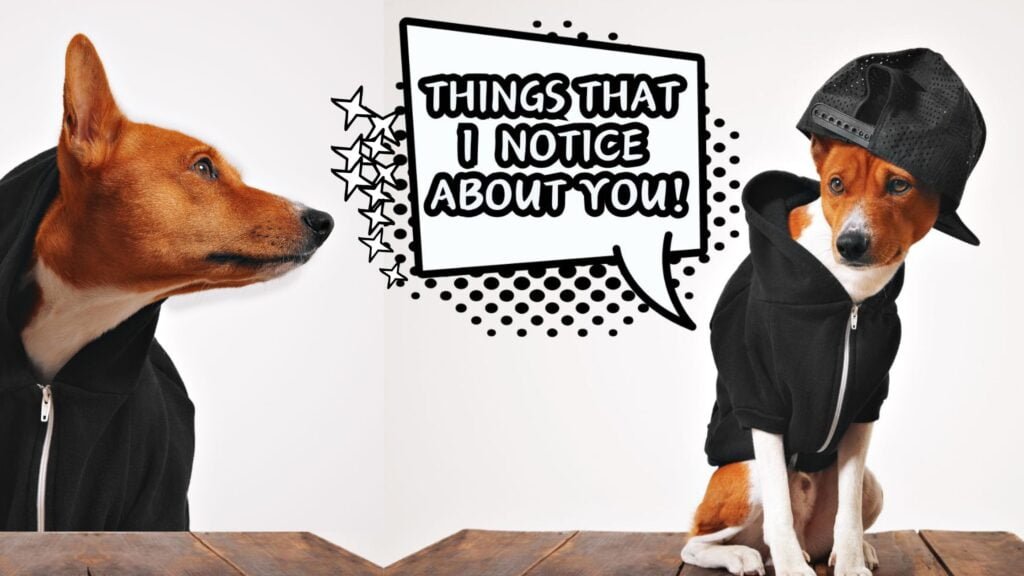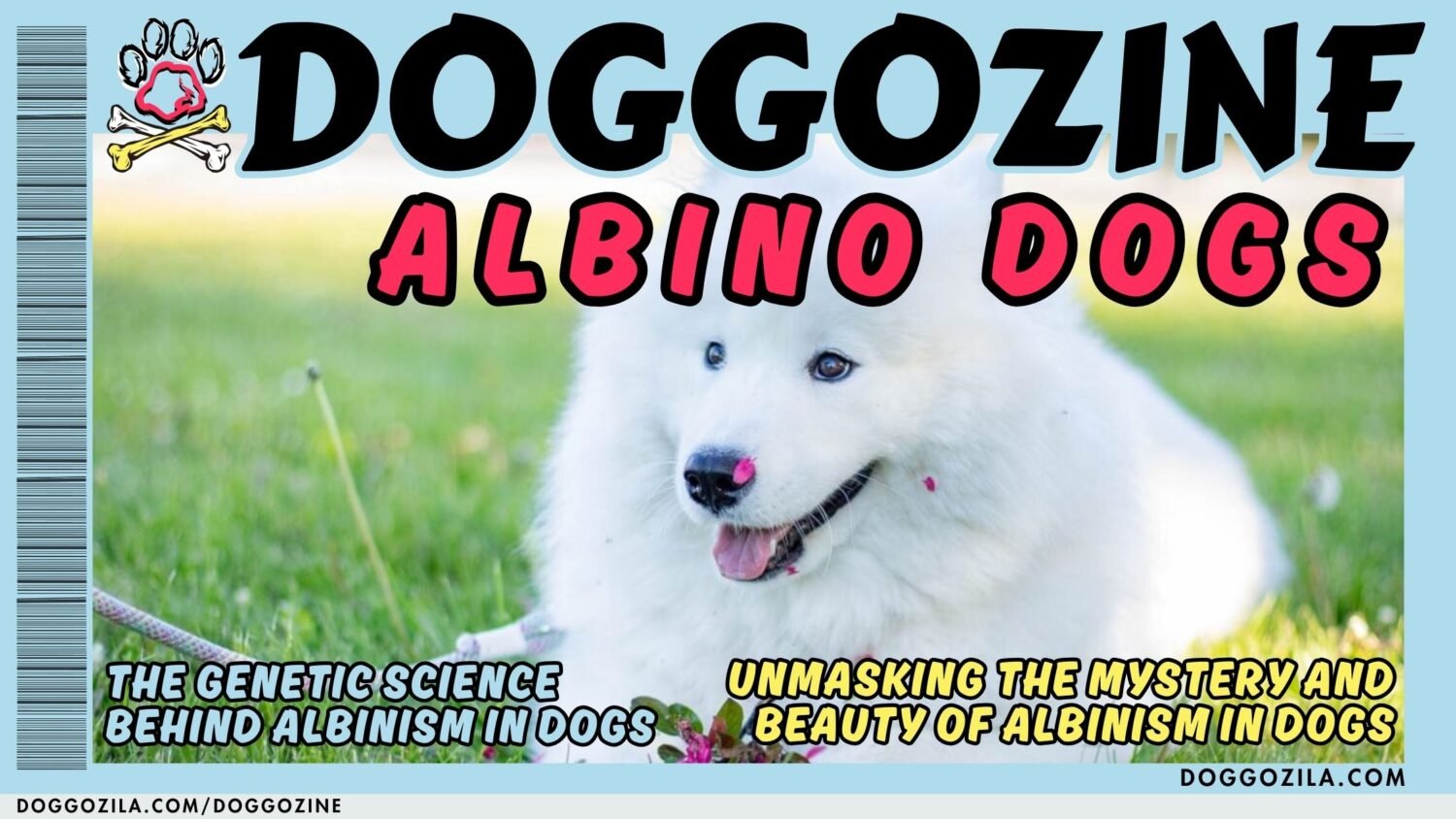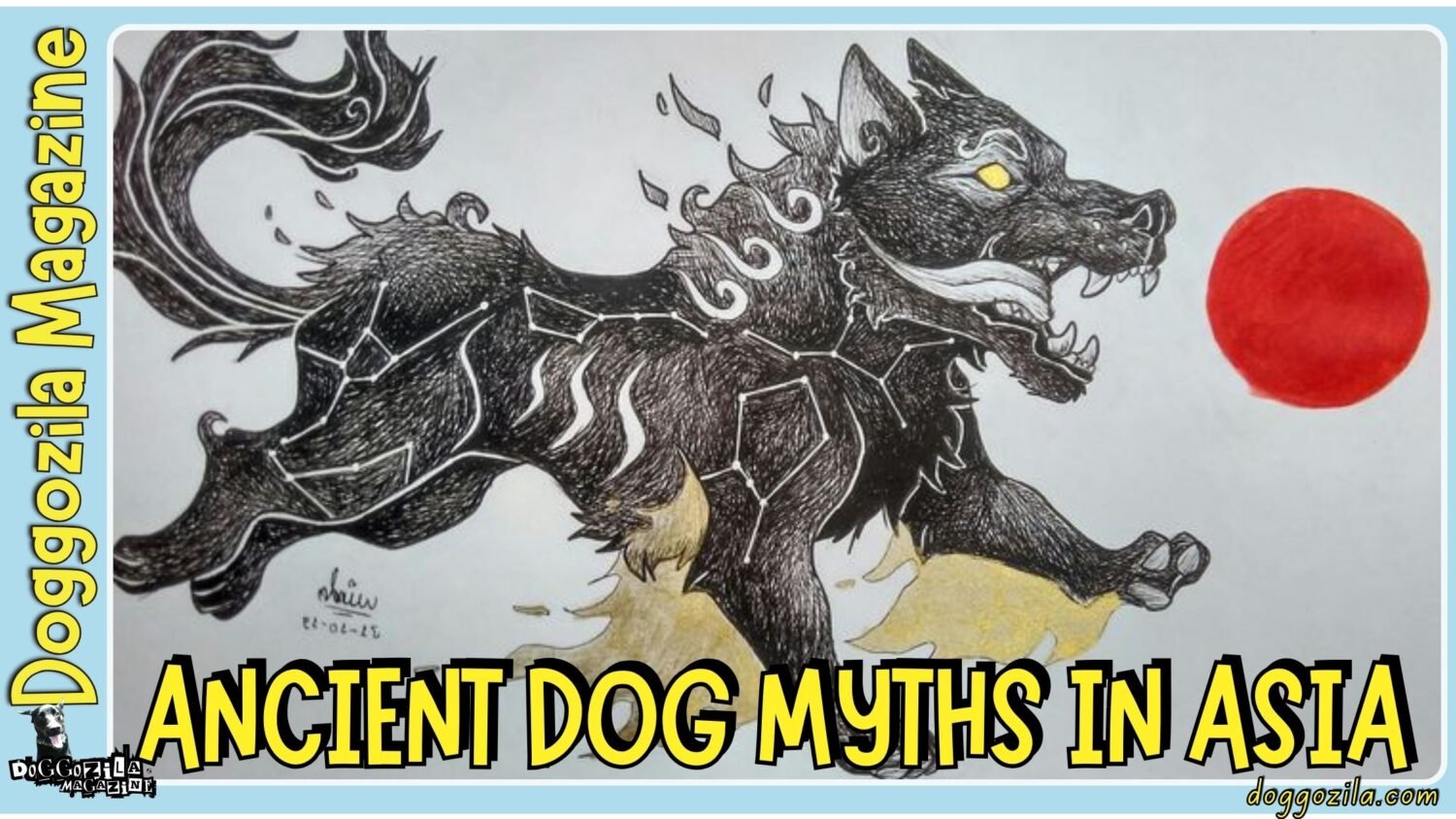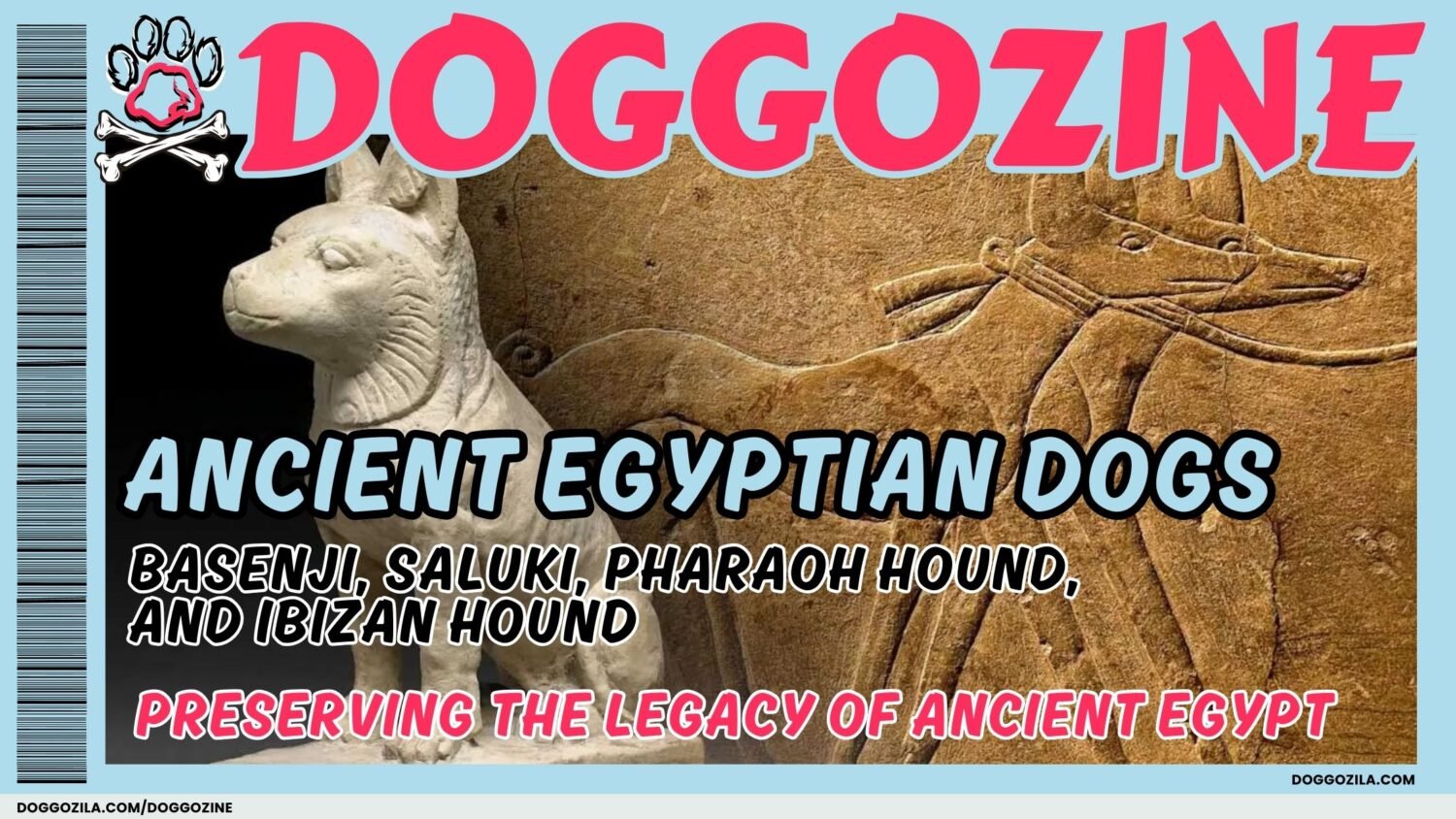As a dog owner, witnessing your dog get stuck after mating for the first time can be a truly startling experience. You might feel a surge of panic, wondering if something has gone terribly wrong. Rest assured, this completely natural phenomenon, known as the “copulatory tie” or “breeding tie,” is a standard part of dog reproduction. This article will dive deep into the fascinating science and evolutionary reasons behind this unique process. We will unravel the mystery and give you a clear understanding of exactly why do dogs get stuck after mating, turning your concern into captivated wonder. At the end of the article, you will find the most asked questions on this topic answered!
Witnessing dogs get stuck after mating can be alarming, but this perfectly normal event is the key to understanding the remarkable science of dog reproduction.

WHY DO DOGS GET STUCK AFTER MATING EXPLAINED: IT IS PERFECTLY NORMAL
If you’ve ever found yourself anxiously searching “why do dogs get stuck after mating,” the first thing to know is that this is a standard and healthy process. This event, called a tie, represents a clear sign that mating is proceeding as nature intended.
The tie happens when the male and female dogs become physically connected back-to-back for a period of time. This can last anywhere from just a few minutes to over half an hour, though the average is about 10 to 15 minutes. During this time, the two dogs will typically remain calm and may even need your reassurance.
Understanding that this is a normal biological function can help you stay calm and avoid any actions that could potentially harm the dogs. It’s a remarkable adaptation, not a cause for alarm.
Understanding Why Do Dogs Get Stuck After Mating Is Crucial For Owners
When you understand the science, the process becomes far less worrying. The tie is not a malfunction or a problem, it’s an evolutionary adaptation designed to boost the chances of a successful pregnancy. Forcing the dogs apart is one of the worst things you can do, as this can cause serious injury to both animals.
Instead of panicking, your role is to provide a calm and quiet environment. Speak to them in a soothing voice and ensure they do not try to thrash or pull away violently. This knowledge empowers you to handle the situation correctly, ensuring the safety and well-being of both dogs.
The Biological Process Of Why Do Dogs Get Stuck After Mating Is Fascinating
The core of the matter lies in the male dog’s anatomy. Inside the female, a part of the male dog’s penis called the bulbus glandis swells up significantly. This bulb-like structure is located at the base of the penis and can expand to three or four times its normal size.
Simultaneously, the female’s vaginal muscles contract around this swollen bulb, effectively creating a secure “lock.” This physical mechanism ensures that the male dog remains in place long after he has finished ejaculating. This extended connection helps prevent semen from leaking out, giving the sperm a better opportunity to begin their journey to fertilize the eggs.
Many Owners Mistakenly Panic When They See Dogs Get Stuck After Mating
Your initial concern is a common and understandable reaction, especially for first-time breeders or pet parents. The sight can indeed look strange and even distressing if you don’t know what’s happening. However, dog reproduction is simply different from that of humans.
This tie is a common trait among many canids, including wolves and foxes. So, when you see it, remember that you are witnessing an ancient, natural ritual that has ensured the survival of these species for millennia. Trust in nature’s process and focus on keeping the dogs comfortable until they separate on their own.
🔑 Key Points: The “tie” is a completely normal and healthy part of dog mating, not a cause for alarm or a sign that something is wrong.

THE REPRODUCTIVE ANATOMY BEHIND WHY DO DOGS GET STUCK AFTER MATING
The reproductive strategy behind the dog’s copulatory tie represents an evolutionary marvel that significantly enhances breeding success. This extended connection serves as nature’s ingenious method for maximizing the likelihood of pregnancy following a single mating session. To truly grasp why do dogs get stuck after mating, we need to take a quick tour of dog reproductive anatomy.
The star of the show for the male is the bulbus glandis, a spherical area of erectile tissue at the base of the penis. When not erect, it is unnoticeable, but during mating, it engorges with blood to create the famous “knot.” For the female, her role involves the powerful muscles of the vagina that rhythmically contract during and after penetration. These contractions grip the swollen bulbus glandis, holding it firmly in place.
This incredible physiological teamwork is the engine behind the copulatory tie, a perfect lock engineered by evolution. Understanding the purpose behind this phenomenon helps appreciate the sophistication of natural reproductive strategies in the animal kingdom.
The Role Of The Bulbus Glandis Is Central To Why Do Dogs Get Stuck After Mating
This unique anatomical feature is what makes the dog mating process so distinctive. After the male dog achieves penetration, the thrusting action stimulates the bulbus glandis to rapidly fill with blood. This transformation happens inside the female, creating a physical anchor that is difficult to dislodge.
These coordinated physical responses create the “tie” that temporarily locks the two dogs together. The design is so effective that it temporarily makes the two dogs a single reproductive unit. This isn’t a quick in-and-out process, it’s a sustained connection that serves a vital purpose for maximizing the potential of the mating effort.
Female Anatomy Is Also Important to Understand Why Dogs Get Stuck After Mating
It’s a common mistake to think this is all about the male dog, but the female’s body plays an active and crucial role. Her vaginal muscles don’t just passively accept the male, they actively contract and grip the swollen bulbus glandis. This muscular action is an involuntary reflex triggered by the mating process.
The female’s vaginal walls respond to the stimulation by contracting rhythmically around the swollen tissue, further securing the connection. This firm grip ensures that the tie remains secure, preventing premature separation. This bilateral involvement highlights that the tie is a cooperative effort between both dogs, even if it might not always appear that way to our eyes.
The Two-Part Coitus Process Explains The Dogs’ Position Change
You’ll often see the male dog lift a leg over the female’s back after penetration, turning them into a back-to-back pair. This “turning” maneuver is a natural and intelligent part of the process. This new position is much more comfortable and stable for both animals, reducing strain and preventing them from falling over.
It also helps keep the penis in the correct alignment, protecting both dogs from potential injury. So, if you see them smoothly transition to this stance, know that it’s a positive sign that everything is progressing exactly as it should. This sophisticated reproductive strategy has proven so effective that it has become standard across the canine family.
🔑 Key Points: The physical lock is caused by the swelling of the male’s bulbus glandis and the female’s vaginal muscles contracting to hold it in place.

THE EVOLUTIONARY ADVANTAGES OF THE TIE
This unique mating adaptation has provided significant evolutionary advantages throughout canine history. In wild canid populations where mating opportunities might be limited, each breeding encounter becomes critically important for passing on genetic material.
The tie mechanism ensures that every possible mating has the highest conceivable chance of producing offspring. This efficient approach to reproduction has allowed wild canines to thrive even in challenging environmental conditions with limited resources.
The strategy proves particularly advantageous for species like wolves where breeding typically occurs only once annually during the female’s fertile period. This narrow conception window makes reproductive efficiency absolutely essential for species survival.
Dogs Get Stuck After Mating as The Tie Directly Boosts Pregnancy Chances
In the wild, a female in heat might mate with multiple males, and it’s a race to see whose sperm fertilizes her eggs. The tie gives a male dog a distinct competitive edge. It prevents his semen from leaking out immediately after ejaculation, safeguarding his genetic investment. This ensures his sperm has a head start in the journey to the waiting eggs. For breeders, observing a good, solid tie is often considered a promising indicator for a potential pregnancy, as it suggests a efficient transfer and retention of semen.
This Trait Is Shared Across Canids, Which Is Why Do Dogs Get Stuck After Mating
You can observe this same mating behavior in wild canines like wolves, coyotes, and foxes. This shared characteristic tells us that the tie is an ancient and highly successful reproductive strategy. It evolved millions of years ago in a common ancestor and has been preserved because it works so well. In pack situations, it may also help establish paternity and reduce aggression from other males dogs, at least temporarily. So, when your domestic dogs tie, you are seeing a deep, wild instinct in action right in your own home or yard.
Dogs Get Stuck After Mating as The Tie Allows For A Complete Sperm Transfer
Canine ejaculation occurs in three distinct phases, and the final phase, which contains the richest concentration of sperm, happens during the tie. If separation occurred too early, this crucial phase could be interrupted. The prolonged connection allows for the full and complete ejaculation of sperm-rich semen directly into the uterus. This maximizes the number of sperm available for fertilization. It’s a perfect example of nature’s precision, ensuring that every possible advantage is leveraged to create the next generation of puppies.
🔑 Key Points: This trait evolved to increase the chances of pregnancy by preventing semen leakage and giving sperm a head start.
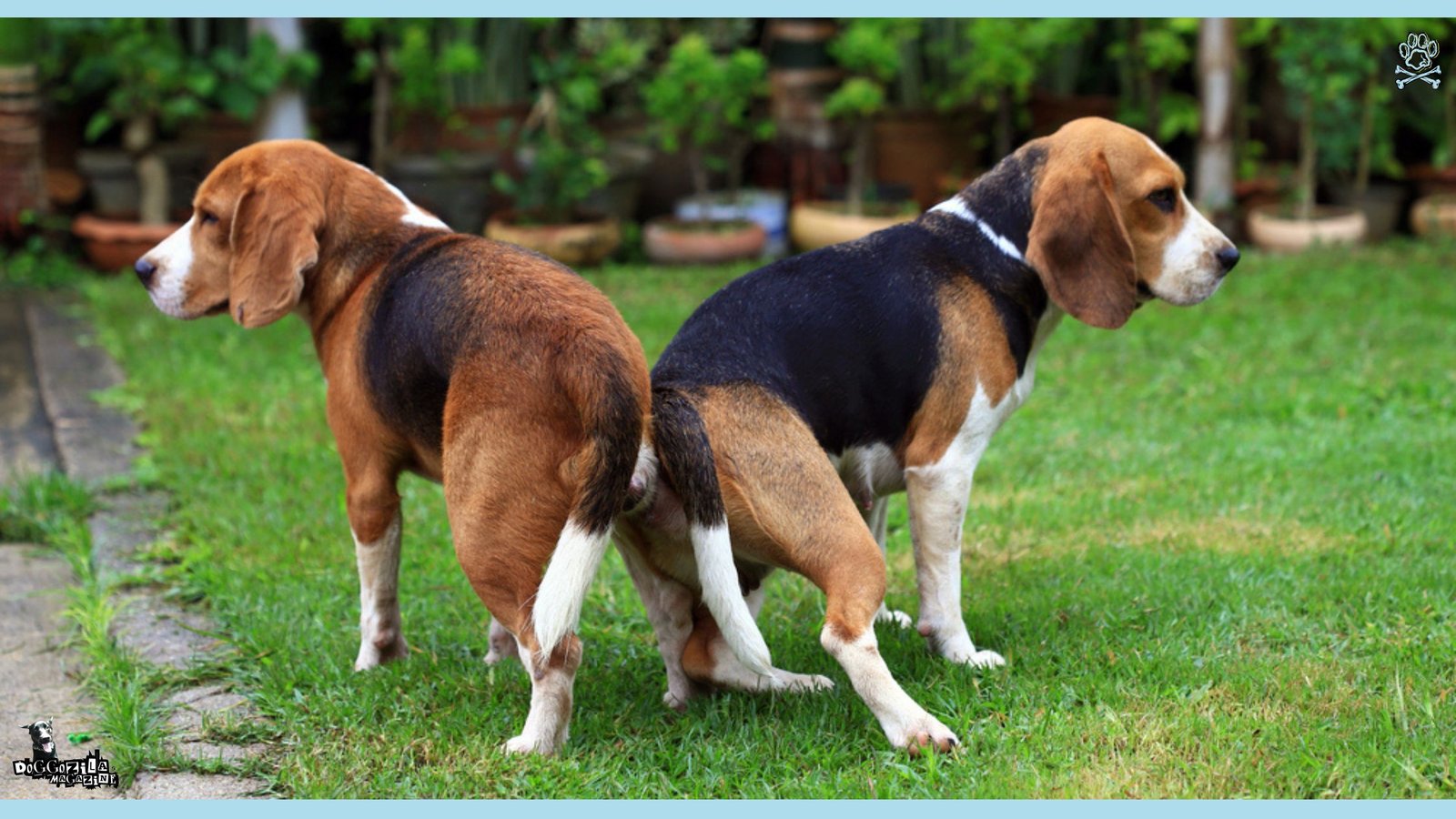
HOW LONG DOES THE TIE LAST AND WHAT INFLUENCES IT?
The duration of the dog’s copulatory tie varies significantly between individual mating pairs, with multiple factors influencing how long the connection persists. Understanding the typical timeframe helps owners manage expectations and avoid unnecessary concern during this natural process.
Typically, a tie lasts between 5 and 20 minutes, but it can be as short as a couple of minutes or extend up to 45 minutes in some cases. There is no “perfect” length, and a longer tie does not necessarily guarantee a pregnancy. The variation depends on several factors, including the individual dogs, their breeds, their experience levels, and even the specific point in the female’s ovulation cycle.
The key is to let the process resolve naturally, without watching the clock. Knowing what to expect regarding duration helps owners remain calm and avoid premature intervention.
Several Factors Influence The Duration Of Why Do Dogs Get Stuck After Mating
A dog’s age, breed, and individual physiology can all affect how long the tie lasts. For instance, a young, inexperienced male might have a shorter tie, while an older, more confident stud could maintain the lock for a longer period. The female’s level of relaxation and her hormonal status also play a significant role. If she is at the peak of her fertility, her body’s responses might be more pronounced. It’s important to remember that a brief tie, sometimes called a “slip mating,” can still result in dog pregnancy, so don’t be discouraged if it seems short.
You Should Never Try To Intervene While Dogs Are Stuck After Mating
This point cannot be stressed enough, never, ever try to force dogs apart when they are tied. You will not help, and you will likely cause significant physical and psychological harm. Trying to pull them apart can tear tissues, cause severe pain, and lead to life-threatening injuries for both the male and female. You might also frighten them, causing them to struggle and injure themselves. Your job is not to separate them but to supervise and comfort them. Pouring cold water on them or startling them is also dangerous and ineffective. Patience is your most important tool.
Staying Calm Is The Best Strategy When Dogs Are Stuck After Mating
Seeing your dogs in a tie can be nerve-wracking, but your calm demeanor is essential. Dogs are very perceptive and can pick up on your anxiety, which may make them restless and exacerbate the situation. Instead, speak to them in a low, soothing voice. You can gently pet them if it seems to relax them.
Ensure the environment is quiet and free from loud noises or other animals that could startle them. If they seem uncomfortable, you can sometimes help the female sit or lie down gently, but never force a change in position. Your peaceful presence helps them remain calm until nature takes its course and they separate on their own.
🔑 Key Points: The tie can last from a few minutes to almost an hour, and its duration varies based on the individual dogs, you should never force them apart.

WHAT TO DO AND NOT DO DURING A MATING TIE?
Witnessing the copulatory tie for the first time can trigger panic in even experienced dog owners, but appropriate response ensures both dogs remain safe and comfortable throughout this natural process. Your primary role during this time involves providing calm supervision and preventing unnecessary stress or injury to both animals.
The most crucial rule is never attempting to force the dogs apart physically, as this can cause severe physical damage and significant psychological trauma. Instead, focus on creating a peaceful environment where the natural biological process can complete without interruption.
Your calm demeanor directly influences how the dogs experience this potentially stressful situation. Proper management during this sensitive period prevents injuries and ensures successful breeding when pregnancy is desired.
Creating A Calm Environment Helps Dogs Who Are Stuck After Mating
Your number one task is to manage the environment to prevent stress or injury. If the mating occurred in a busy area, gently shield them from any distractions. Drape a leash loosely over a post to prevent wandering if you are outside, but never tether them tightly.
You can place a soft mat or towel under them if they are on a hard surface. Watch for signs of extreme distress, but remember that some whining or restless movement can be normal, especially for a first-timer. Your goal is to make this involuntary together as stress-free as possible for both dogs.
Understanding What Not To Do Is Critical When Dogs Are Stuck After Mating
Let’s reiterate the absolute, forcible separation is a catastrophic choice. The male’s penis is incredibly sensitive when swollen, and the female’s tissues are equally vulnerable. Pulling them apart can cause fractures to the male’s baculum (penis bone), severe lacerations, and permanent damage.
This could end a breeding career and require emergency veterinary surgery. The psychological trauma could also make either dog fearful or aggressive toward future mating attempts. The risks are simply too high, so you must resist the urge to intervene physically.
Aftercare Is Important Once The Dogs Separate Naturally
When the bulbus glandis shrinks back to its normal size, the two dogs will separate easily and on their own. Once they are apart, you might notice some fluid leakage from the female, this is normal. Both dogs will likely groom their genital areas extensively, this is also standard behavior.
Offer both dogs fresh water, as the process can be dehydrating. Allow them to rest in a quiet place. It’s also a good practice to check both dogs for any signs of discomfort or unusual swelling, though some mild redness is typical and should subside quickly.
🔑 Key Points: Your main role is to stay calm, provide a quiet environment, and never, ever try to pull the dogs apart, as this causes severe injury.

CAN DOGS GET PREGNANT WITHOUT A TIE?
This is a very common question, and the answer is yes, pregnancy is possible even without a visible tie. This event, known as a “slip mating,” occurs when the male penetrates and ejaculates but the bulbus glandis does not sufficiently swell or lock before he withdraws. Sperm are deposited inside the female during ejaculation, and they begin swimming immediately.
So, while the tie greatly improves the odds of conception by preventing semen leakage, it is not an absolute requirement. A pregnancy from a slip mating might just have slightly lower statistical odds.
Education represents the most powerful tool for preventing well-intentioned but potentially dangerous reactions based on misunderstanding rather than biological reality.
A Slip Mating Can Still Lead To Pregnancy
If you witness a slip mating, you should still assume the female could become pregnant. The sperm are resilient and motivated, and they can survive within the female’s reproductive tract for several days, waiting for the eggs to be released. This is why it’s crucial to keep a female in heat strictly separated from male dogs, even if you think a “full” mating hasn’t occurred. It only takes a moment of inattention for a slip mating to happen. If pregnancy is not desired, a quick consultation with your vet is essential to discuss possible options.
The Tie Is Not A Pregnancy Guarantee
Conversely, it’s important to know that a successful and lengthy tie does not automatically mean you will have puppies in 63 days. Many other factors determine pregnancy, including the fertility of both dogs, the timing of the mating relative to the female’s ovulation, and the overall health of the animals. A tie is a positive sign that the mechanics went well, but it’s not a 100% confirmation. Pregnancy confirmation should always be done by a veterinarian through ultrasound or other diagnostic methods around the 25-30 day mark.
Breeders Often Track Cycles To Improve Success Rates
Responsible dog breeders don’t just rely on the tie, they use science to maximize their chances. They often work with a veterinarian to track the female’s cycle using methods like vaginal cytology (smear tests) or progesterone blood testing. This helps them pinpoint the exact window of peak fertility, which is usually between days 10 and 14 of her season. By scheduling mating during this optimal time, they increase the probability that viable eggs are present when the sperm arrive, making even a brief tie more likely to be successful.
🔑 Key Points: Yes, a “slip mating” can still result in pregnancy, but the tie significantly improves the odds of conception.
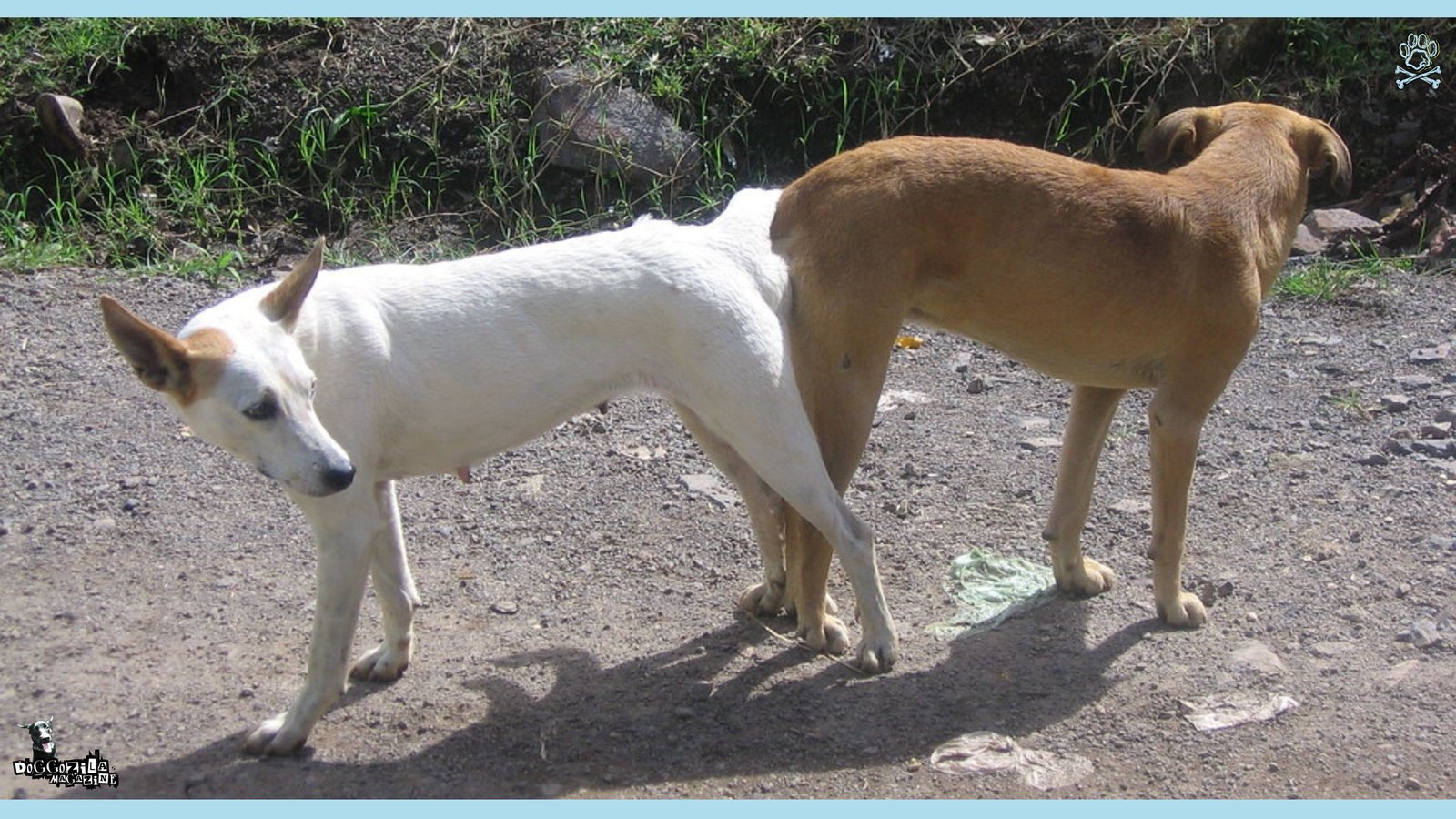
RECOGNIZING NATURAL DOG MATING BEHAVIORS
The entire mating ritual in dogs is a complex dance of instinctual behaviors. It begins with the male sniffing and licking the female’s vulva to detect the pheromones she releases during her heat cycle. A receptive female will “flag” her tail, meaning she will hold it high and move it to the side to grant the male access.
There may be a period of playful interaction before the male mounts. After ejaculation and the subsequent tie, you may hear the female cry or whine, this can be normal communication but can also signal anxiety or discomfort, so monitor her closely.
This knowledge empowers owners to make informed decisions supporting their dogs’ reproductive health throughout different life stages.
Courtship Is A Key Prelude To Dogs Getting Stuck After Mating
This courtship phase is vital for ensuring both dogs are willing participants. The male will be intensely interested in the female’s rear end, and she may playfully engage with him if she is ready. Forcing a mating between two unwilling dogs is stressful and can be dangerous. Find out more how do dogs flirt and dog foreplay!
A female that is not receptive may sit down, lie on her stomach, or even snap at the male to show her displeasure. Responsible breeders always introduce dogs in a neutral, controlled setting and allow them to get comfortable with each other, which leads to a much smoother mating process.
Understanding The Flagging Tail Signal In Female Dogs
The “flagging” tail is one of the clearest signs a female dog gives to show she is ready to mate. When you see her stiffen her back legs and whip her tail to the side or hold it firmly to the side, she is signaling her receptivity to the male. This behavior is triggered by her hormonal changes during the estrus phase of her heat cycle. This is the green light for a knowledgeable male dog. If you are planning a breeding, observing this dog mating behavior is a great natural indicator that the timing might be right.
Vocalizations Are Common When Dogs Are Stuck After Mating
Don’t be overly concerned if you hear the female whine, cry, or even let out a yelp during the tie. This is common and not necessarily a sign of pain. It can be a expression of excitement, stress, or impatience. The male might also whine before the mating begins out of anticipation. However, it is crucial to distinguish these normal sounds from sharp, continuous cries of distress, which could indicate a genuine problem. Knowing your dogs’ normal behavior will help you judge whether their vocalizations are within typical bounds.
🔑 Key Points: A receptive female will often “flag” her tail to the side, which is a clear signal she is ready to mate.
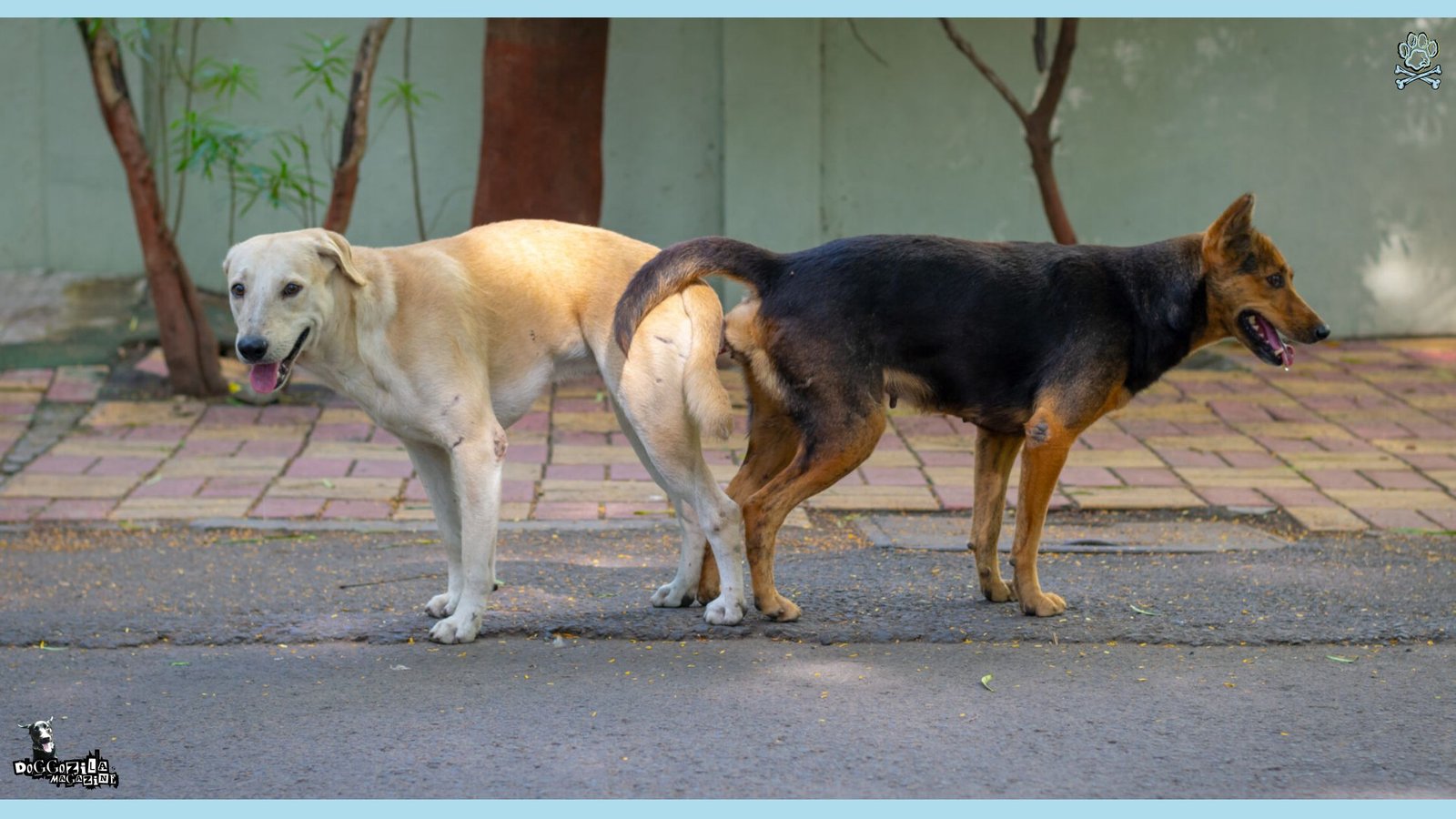
RESPONSIBLE BREEDING AND FINAL THOUGHTS
Understanding the science behind why do dogs get stuck after mating is the first step toward responsible reproductive management. This knowledge allows you to assist effectively without causing harm.
Breeding dogs is a significant commitment that requires careful planning, health testing, and a dedication to the well-being of both the parents and the resulting puppies.
Always prioritize the health and temperament of the animals over any other consideration, and ensure you have the time, resources, and knowledge to care for a litter properly.
Health Testing Is A Cornerstone Of Responsible Breeding
Before even considering mating your dogs, both the male and female should undergo thorough health screenings by a veterinarian. This includes genetic testing for breed-specific hereditary conditions, hip and elbow evaluations for larger breeds, and a general wellness check. These tests help ensure that you are not passing on serious health problems to the puppies. Reputable breeders transparently share these health clearances and are motivated by improving the breed, not just producing puppies. This ethical approach sets them apart.
Spaying And Neutering Prevent Unplanned Matings
If you have no intention of breeding your dog, spaying (for females) or neutering (for males) is the most responsible choice. This not only prevents unwanted litters that contribute to pet overpopulation but also offers significant health benefits. Spaying a female greatly reduces her risk of mammary cancer and eliminates the risk of pyometra, a life-threatening uterine infection. Neutering a male can reduce roaming, mounting, and some aggressive behaviors. Discuss the optimal timing for this surgery with your veterinarian. Find out more about dog castration ethics!
Consult Your Vet With Any Concerns About Mating Or Pregnancy
Your veterinarian is your best partner in your dog’s reproductive journey. From pre-breeding health checks to confirming pregnancy and assisting with whelping, their expertise is invaluable. If you have any concerns at all during the mating process, the duration of the tie, or the female’s behavior afterward, do not hesitate to call them.
They can provide tailored advice, perform necessary tests, and intervene if any complications arise, ensuring the best possible outcome for your beloved pet. Ultimately, the phenomenon of dogs getting stuck after mating is a beautiful and intricate part of nature’s design. It’s a powerful reminder of the amazing biological processes at work in our canine companions.
By understanding and respecting this process, we can become better, more informed caretakers, whether we are seasoned breeders or simply curious pet owners. The next time someone asks you, why do dogs get stuck after mating you can confidently share the fascinating science behind this natural wonder.
🔑 Key Points: Before breeding, always prioritize the health of the dogs through vet screenings and health testing to ensure the well-being of the parents and puppies.
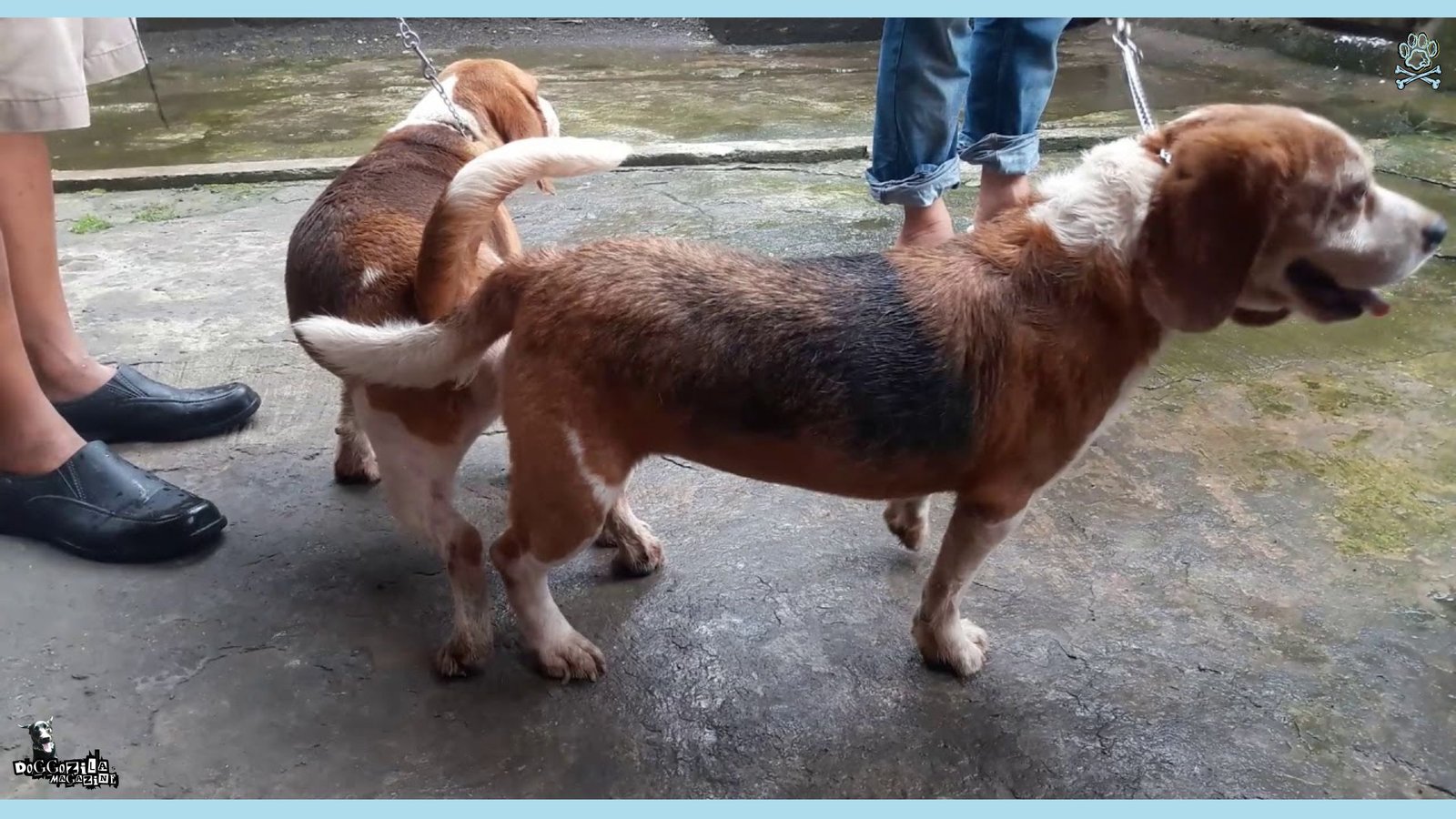
MOST ASKED QUESTIONS, COMMON MYTHS AND SCIENTIFIC FACTS
Find out the answers of the most asked questions about why do dogs get stuck after mating. Many myths surround this behavior. Some owners think it is harmful. Others believe it always means pregnancy. These myths cause confusion. The truth is simpler. The tie is natural and safe. It is not painful for dogs. Understanding the facts helps owners stay calm.
Understanding the natural process behind why dogs get stuck after mating transforms a potentially alarming situation into a fascinating observation of dog biology. This reproductive strategy has evolved specifically to maximize breeding success in dogs, representing normal species-appropriate behavior rather than cause for concern.
Responsible ownership involves both appreciating this natural process and implementing appropriate management to prevent unplanned pregnancies when necessary. Whether you’re intentionally breeding dogs or simply understanding your pets’ behaviors, this knowledge enhances your ability to provide optimal care throughout your dog’s life.
Are Dogs in Pain and Does it Hurt Them?
Pain is a common concern. But the tie does not hurt. When people ask why do dogs get stuck after mating, they often imagine discomfort. In reality, dogs remain calm. They may look awkward, but they are not in pain. The swelling is temporary. Once it subsides, they separate naturally. Owners should not worry. The tie is simply a biological lock. Dogs may whine, but that is usually from stress, not pain. The process is designed by nature to be safe. If it were painful, dogs would resist mating. Instead, they remain still and calm. Owners should trust the process. The tie is not harmful.
Can Humans Stop The Mating Tie?
Some owners try to separate dogs. This is dangerous. When people ask why do dogs get stuck after mating, they sometimes think they should help. But pulling them apart can cause serious injury. The male may suffer damage. The female may also be hurt. The safest option is to wait. Dogs will separate naturally. Owners should supervise quietly. Human interference only makes things worse. The tie is delicate and should not be disturbed. Patience is the best approach. Dogs know what to do. Nature has guided this process for centuries. Owners should simply observe.
When Dogs Get Stuck After Mating Does it Mean Puppies are Coming?
Pregnancy is not guaranteed. The tie increases chances, but it is not certain. When people ask why do dogs get stuck after mating, they often assume puppies. But conception depends on timing, fertility, and health. A vet can confirm pregnancy later. Owners should not assume too soon. Signs like appetite changes may appear after weeks. Ultrasound is the best confirmation. The tie is only one part of reproduction. Some females may not conceive even after multiple ties. Others may conceive after just one. The tie is important, but not absolute. Responsible owners should always confirm with a vet. Puppies are never guaranteed.
The Science Behind The Mating Tie
The tie is not random. It is a carefully evolved process. Dogs, wolves, and foxes all experience it. The bulbus glandis plays the main role. It swells and locks the pair together. This ensures sperm stays inside the female. Evolution designed this process for reproductive success. It is one of the most unique features of canine biology.
What Role Does Anatomy Play in The Mating Tie?
Anatomy is everything here. The male’s bulbus glandis swells dramatically. The female’s vaginal muscles contract. Together, they create a lock. When people ask why do dogs get stuck after mating, the answer is biology. This lock ensures sperm transfer. It also prevents other males from interfering. Evolution designed this system for reproductive success. The tie is not painful. It is simply mechanical. Dogs remain calm during the process. The anatomy of both male and female is perfectly adapted. This adaptation ensures survival of the species. It is a fascinating example of natural design.
How Does Evolution Explain The Dog Mating Tie?
From an evolutionary view, the tie makes sense. Dogs only come into heat twice a year. That means fewer chances to reproduce. When people ask why do dogs get stuck after mating, evolution is the answer. The tie maximizes the chance of fertilization. It also ensures genetic survival. Wolves and wild canines rely on this same process. Nature wastes no opportunity. The tie prevents other males from interfering. It ensures one male’s genes are passed on. This increases reproductive success. Evolution favors strategies that work. The tie is one of those strategies. It is a survival mechanism.
What About Other Animals?
Not all animals experience this. Cats, for example, do not. When people ask why do dogs get stuck after mating, they sometimes compare species. But the tie is unique to dogs. Foxes, wolves, and coyotes also experience it. It is part of their reproductive strategy. Each species has its own method. For dogs, the tie is essential. It ensures sperm transfer, prevents competition and increases the chance of pregnancy. Other animals use different strategies. Dogs rely on the tie. It is their evolutionary advantage.
Understanding Why Owners Should Stay Calm
The tie is natural and it is not harmful. It does not always mean pregnancy. It is part of dog’s reproduction. Owners should not panic. Patience is key. Veterinary guidance is helpful. Knowledge makes the process less stressful. Understanding the process helps. Owners stay calm. Dogs sense calmness. Stress is reduced. The tie ends naturally. Knowledge empowers owners and prevents mistakes. It ensures safety and builds confidence. Owners feel prepared. Dogs benefit from calm care.
Remember that dogs know what to do. Owners should trust nature.
Veterinary care is important. Myths should be ignored. Facts matter. Calmness helps.

Dogs benefit from supportive owners. Knowledge ensures safety. Owners should always stay informed.




